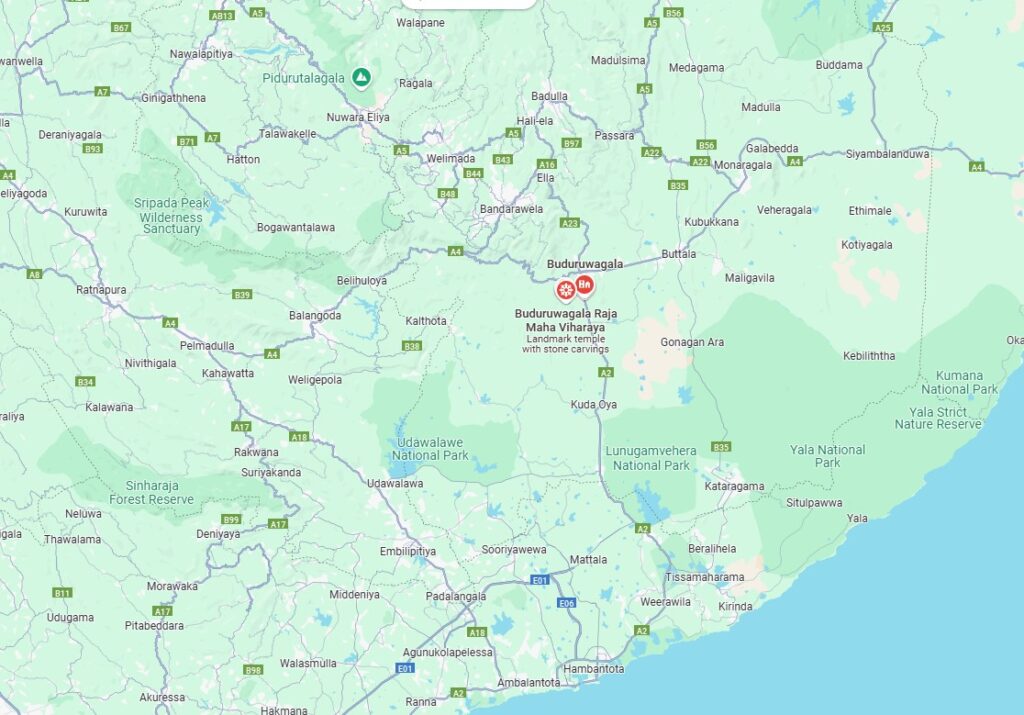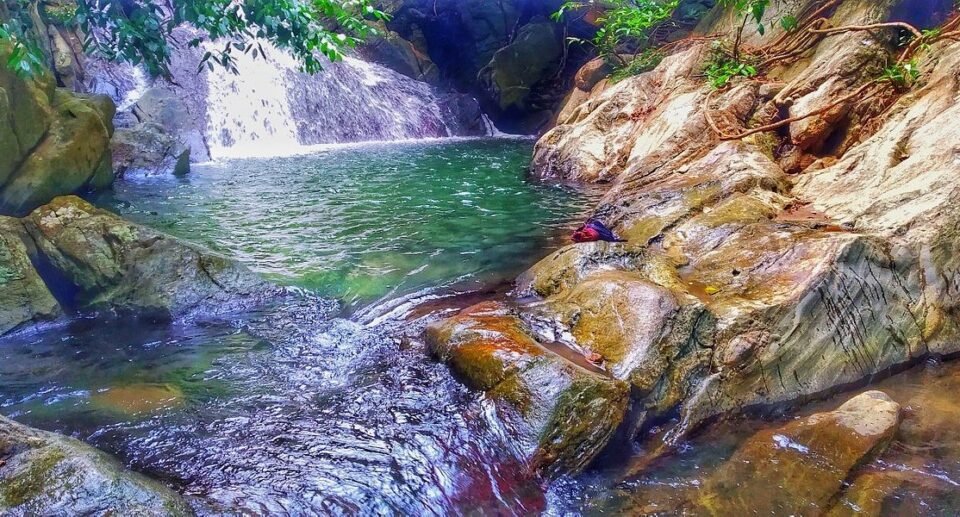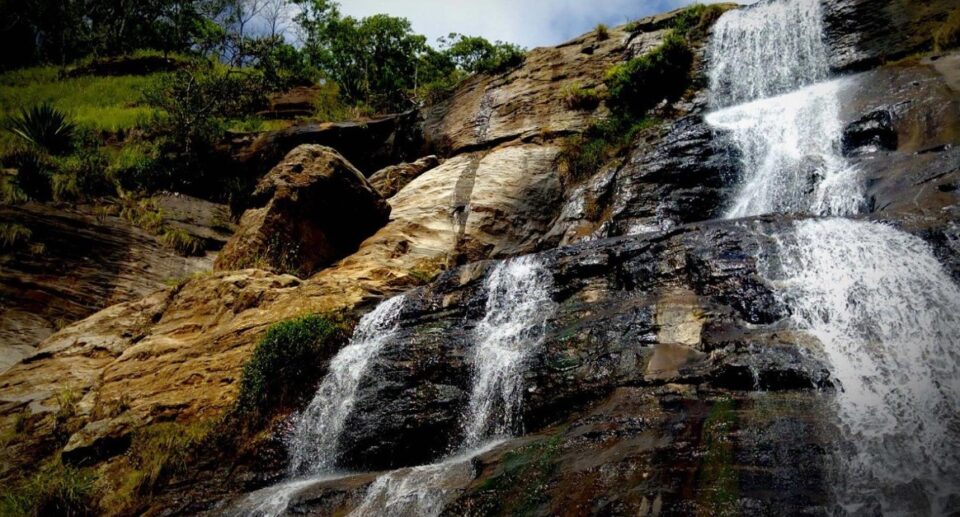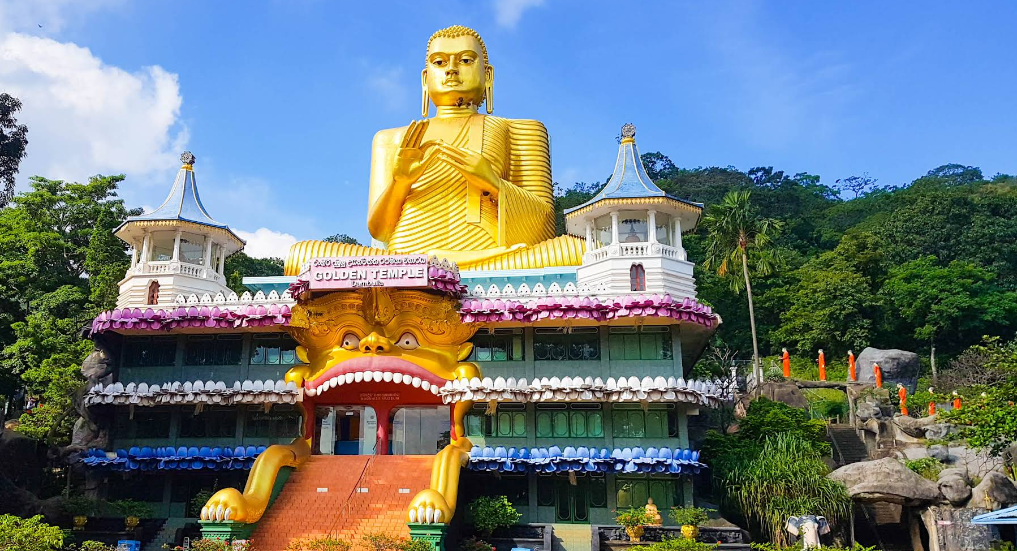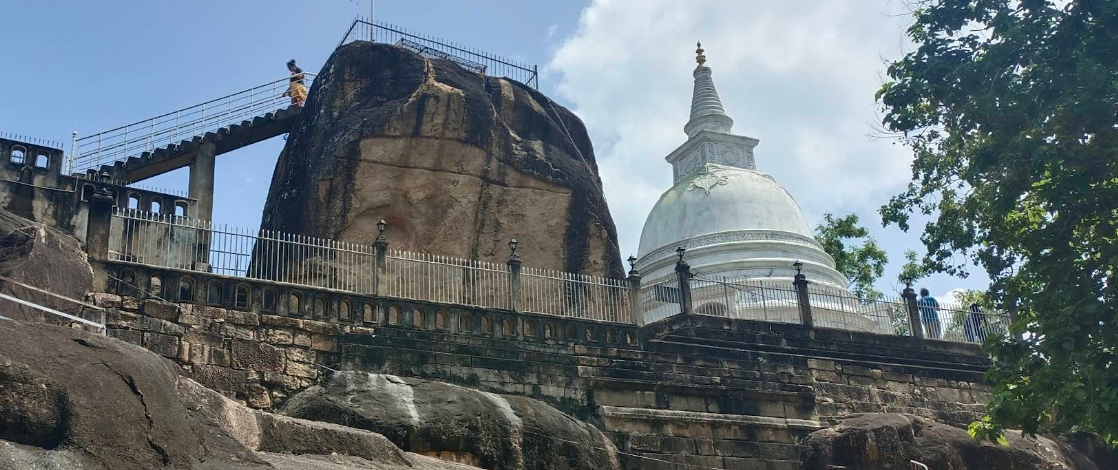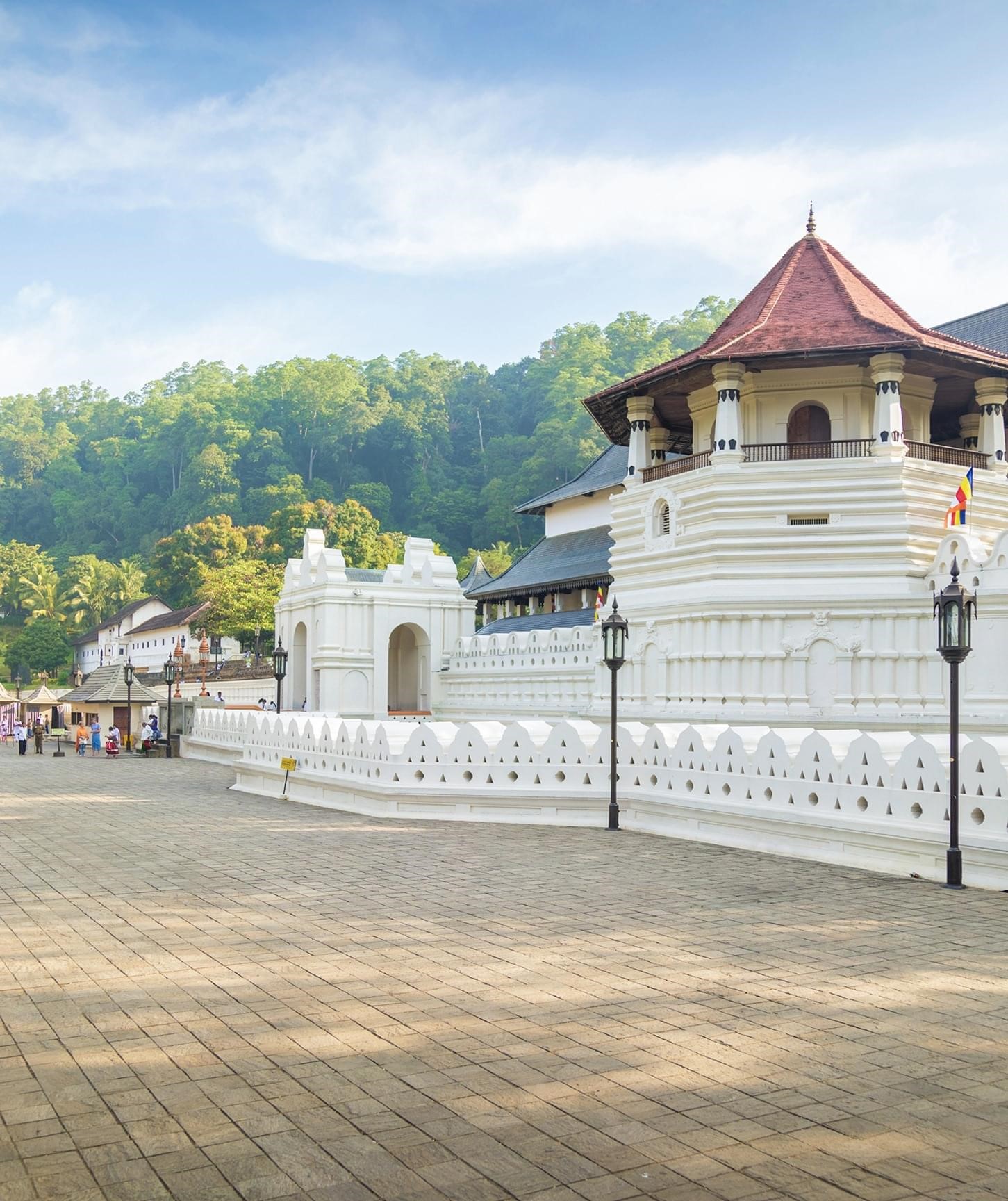Buduruwagala: A Timeless Marvel of Sri Lanka’s Ancient Buddhist Heritage
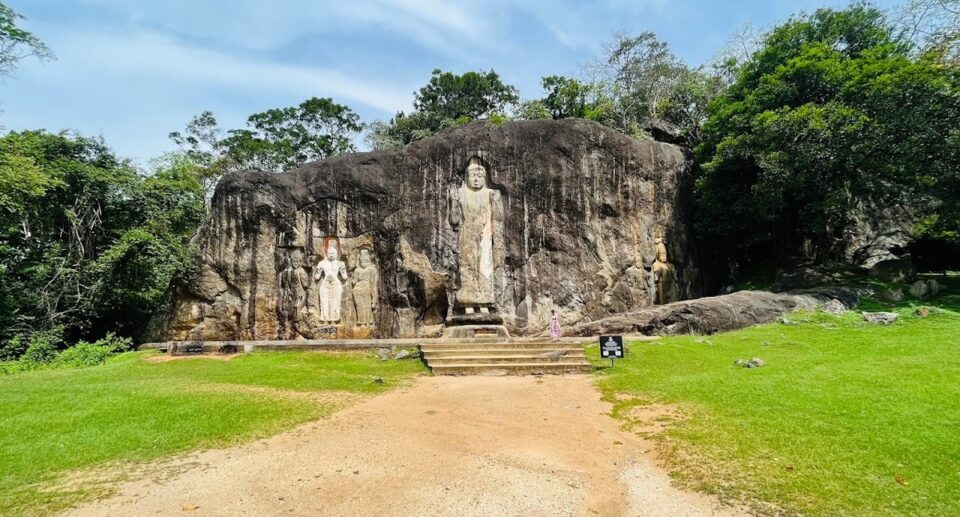
The Majestic Rock Temple of Sri Lanka
Sri Lanka, a nation famous for its rich Buddhist heritage and breathtaking natural beauty, has many ancient temples and monuments that reflect its rich cultural heritage. Among these ancient wonders, Buduruwagala is one of the most striking examples of the island’s spiritual past and artistic prowess. Located in the remote and serene setting near Wellawaya in the Uva Province, Buduruwagala is not only an archaeological site but also a symbol of religious devotion, sculptural grandeur, and historical continuity. This essay discusses the history, features, cultural significance, and heritage of Buduruwagala, providing a comprehensive picture of reasons why this site continues to awe tourists and scholars.
Historical Background
The word “Buduruwagala” is a Sinhalese term which translates to “the rock with the image of the Buddha” (Buduru = Buddha, Wagala = rock). This is a fairly precise definition of the site’s central attraction: a series of seven giant rock-carved statues carved on one rock face. These were fashioned sometime in the 10th century CE, when Mahayana Buddhism enjoyed a considerable following in Sri Lanka but still played second fiddle to the dominant Theravāda Buddhism.
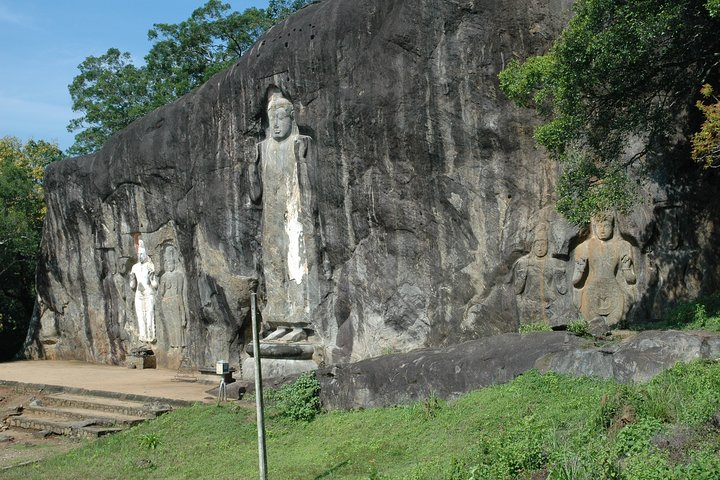
Historians regard Buduruwagala to have been carved in the late Anuradhapura or early Polonnaruwa period. The location, though not possessing inscriptions that date the builders, displays stylistic aspects of the sculpture to be mainly South Indian Pallava and Chola style, indicating a time when South Asian Mahayana thought held supremacy over Sri Lankan Buddhism.
Architectural and Artistic Features
Most remarkable is the huge central Buddha figure measuring a sheer 15.5 meters (51 feet) in height, Sri Lanka’s tallest ancient standing Buddha figure. Carved out of rock in Abhaya Mudra, an expression of confidence, shielding, and peacefulness, the statue is magnificent, with all weathers bearing evidence on it. Still serene, peaceful-looking despite the aging weathered texture on it, exuding tranquil air of sacred spirituality.
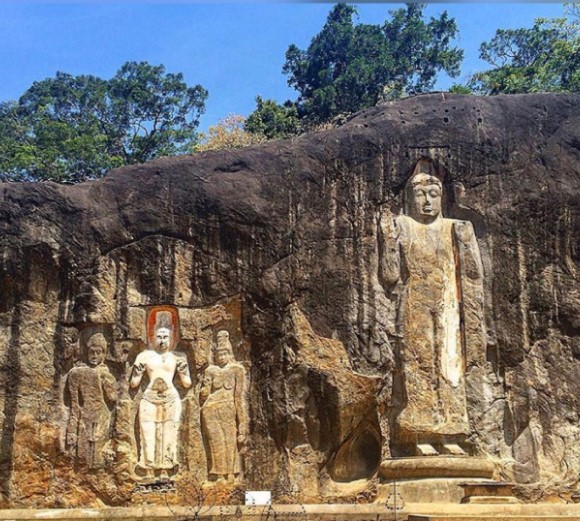
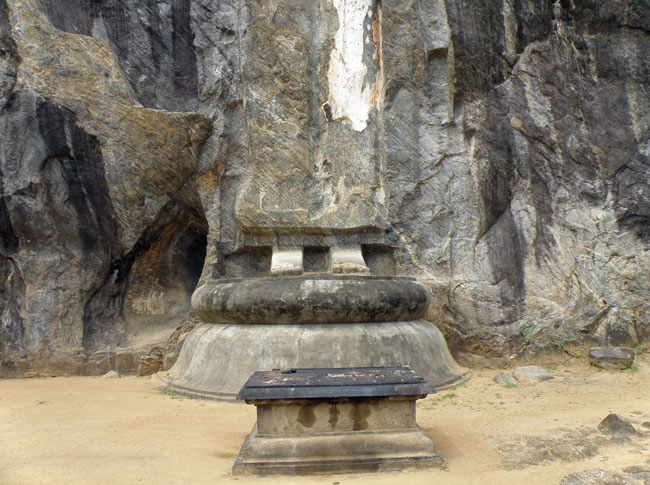
Six other images are placed around the central Buddha, three to the left and three to the right, who are interpreted as bodhisattvas and attendants. To the left, they are interpreted as Avalokiteshvara (the Bodhisattva of Compassion), his consort Tara, and one other attendant. To the right, the figures may be those of Maitreya (the future Buddha), Vajrapani (protector of the Buddha), and possibly Sahampath Brahma or a different god.
What is remarkable about Buduruwagala compared to other Sri Lankan Buddhist sites is the clear evidence of Mahayana and Tantric Buddhism, specifically in the guise of the image of Vajrapani holding a “vajra” or thunderbolt—something of a symbol of Tantric religious practice par excellence. This mixture of iconographic elements makes Buduruwagala one of the few remaining sites in Sri Lanka that visually depicts Mahayana and Tantric traditions.
Religious and Cultural Significance
Buduruwagala is not just an archaeological marvel; it is also a site of deep religious significance. The central figure of the Buddha is the focus of reverence, and the figures of bodhisattvas that surround it embody Mahayana principles of compassion, protection, and future salvation. This ensemble typifies the syncretic religious environment in Sri Lanka when it was constructed, in which different schools of Buddhist philosophy co-existed and affected each other.
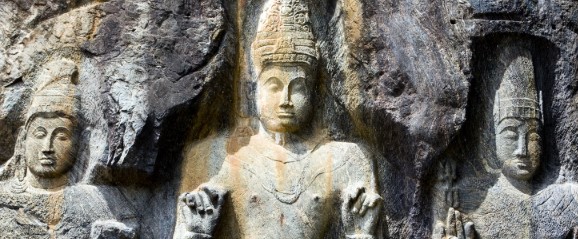
In addition, these statues are believed to be part of an ancient lost monastery complex, which would mean that Buduruwagala was maybe once a thriving spiritual hub. Even in the absence of temple ruins or stupas, these large-scale sculptures would mean that this must have been a significant pilgrimage site and a sacred meditative and devotional ground.
Interestingly, traces of original paint have been found on the statues, indicating that the figures were originally brightly colored, adding to the visual splendor and perhaps used in rituals or ceremonies. One of the fascinating features is a carved flame-shaped niche said to emit an oil-like substance with a mustard-like smell, adding to the mystical aura of the site.
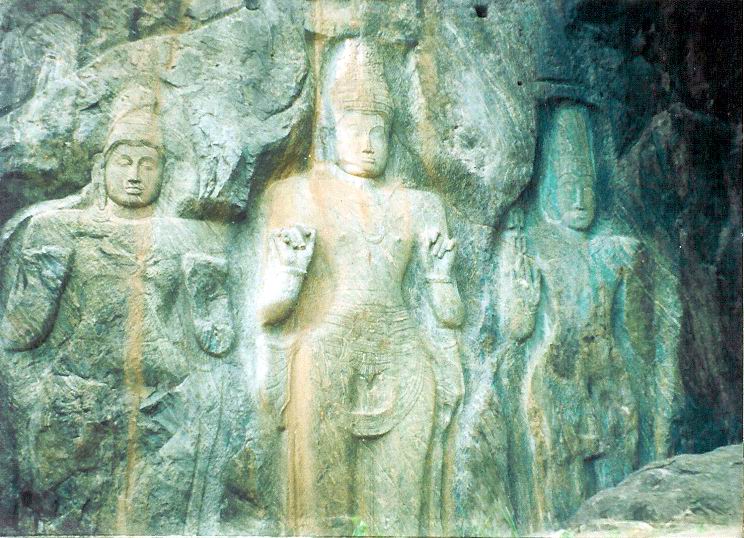
Location and Natural Setting
Buduruwagala lies around 5 kilometers southeast of Wellawaya, in the Monaragala District. The site is tucked away in a forested area, accessed by a dirt track that makes its way through rice fields and vegetation. This seclusion, quiet atmosphere contributes to the spiritual ambiance of the site, making it not just a place of historical importance, but also a place for individual introspection.
A small lake nearby and the natural terrain create a peaceful, almost meditative environment. The combination of human sculpture with natural rock and forest landscape is highly symbolic in Buddhism, representing harmony between the human and the natural world.
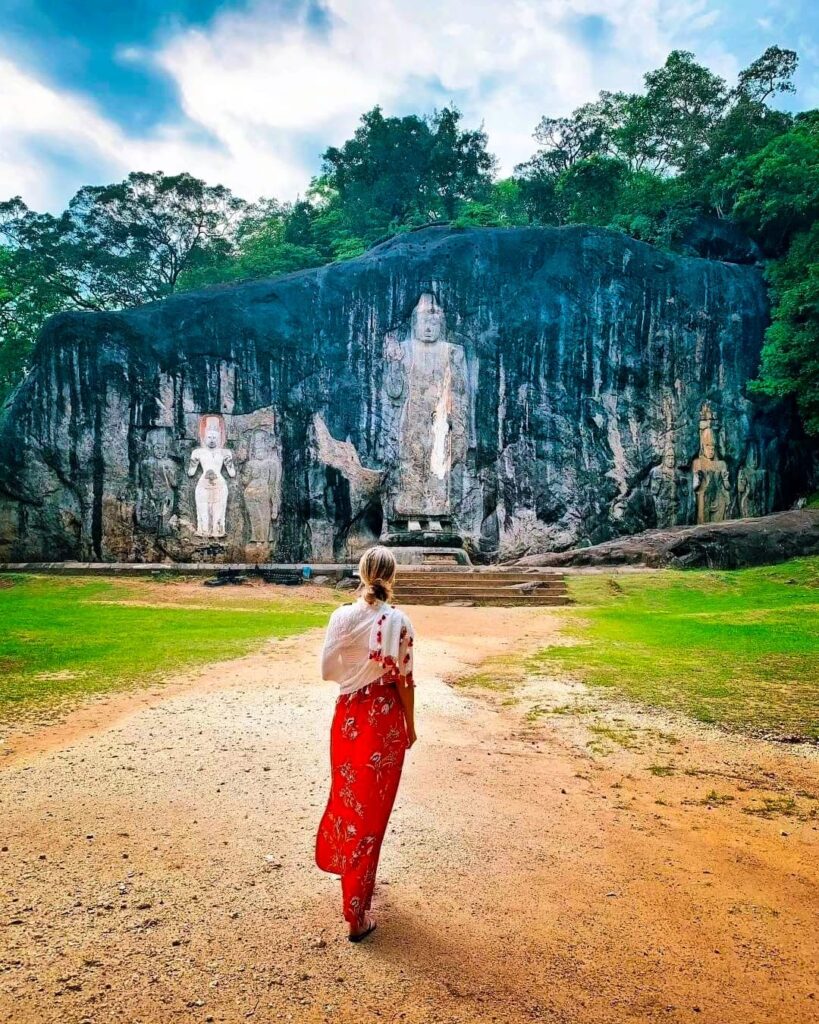
Preservation and Tourism
While Buduruwagala is not nearly as well known or touristy as places like Sigiriya or Anuradhapura, it has become more popular with tourists and heritage buffs in recent years. It is now protected by the Sri Lankan Department of Archaeology, and steps have been taken to keep the rock carvings from erosion and man-made damage.
The place remains relatively uncommercialized, which helps it to preserve its peaceful character. However, with increasing demand comes the need for responsible tourism, improved signage, and basic amenities for visitors. With increased publicity and awareness, Buduruwagala will be a better-known cultural place without losing its sacred character.
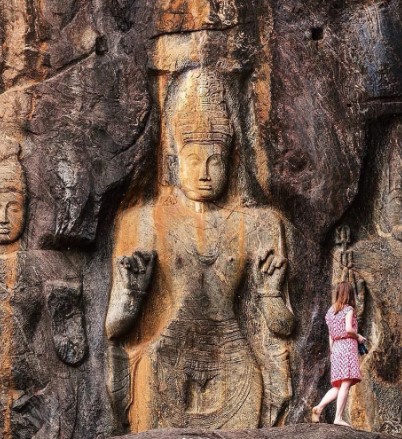
Symbolism and Interpretation
All the figures in Buduruwagala are symbolic. The Buddha in the center represents enlightenment and fearlessness. The others around him represent aspects of bodhisattva ideals compassion (Avalokiteshvara), wisdom (Tara), protection (Vajrapani), and hope (Maitreya). They are universal ideals and relevant even today, so Buduruwagala is not only a piece of history it is a living icon of human aspiration towards spiritual growth and inner harmony.
The presence of Mahayana symbolism suggests a period of openness and exchange within Sri Lankan Buddhism. While the majority of temples at that time focused on Theravāda orthodoxy, Buduruwagala reminds us of a larger Buddhist heritage involving diverse philosophical and devotional traditions.
Buduruwagala is a magnificent example of the cultural imagination and religious fervour of Sri Lanka. Its lovely rock-cut statues, serene surroundings, and symbolic abundance ensure that it is an outstanding and precious site within the cultural heritage of the island. Despite shrouded to some extent by ambiguity regarding its origins and function, it continues to move all who behold it to eloquent silence and spiritual presence.
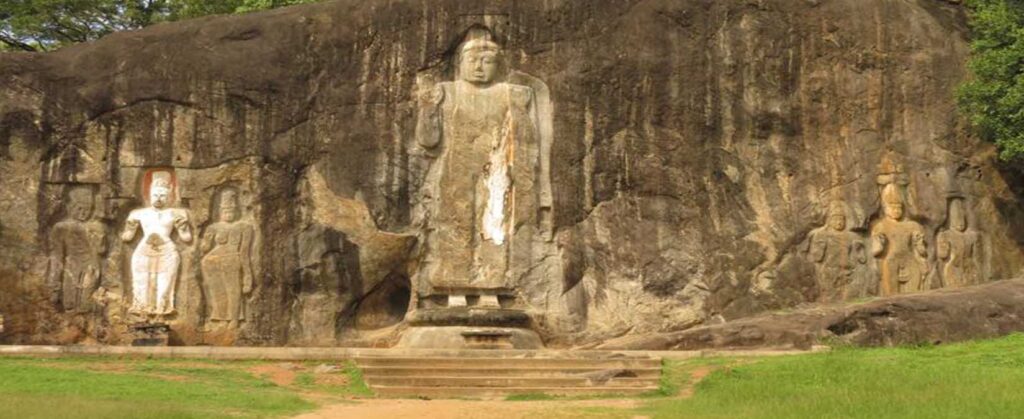
In a time of increasing noise and distraction, Buduruwagala is a tranquil refuge back in time—a site where rock is spoken, and eternal insight lingers across the shoulders of the stone. As Sri Lanka gazes towards its future, holding and learning about sites such as Buduruwagala will be necessary to remember and learn from its amazing past.
By Car (approx. 6–7 hours)
Colombo to Wellawaya: Drive from Colombo on the Southern Expressway (E01) to Matara, and then proceed on the A2 highway north past towns like Tissamaharama and Thanamalwila to Wellawaya.
Wellawaya to Buduruwagala: From Wellawaya, take Buduruwagala Road (M3RR+CH) and drive approximately 4 km to the temple entrance
By Public Transport
- Colombo to Wellawaya: Board a bus from Colombo Fort Bus Station to Wellawaya. The journey takes around 6–7 hours, and buses are frequent.
Wellawaya to Buduruwagala: Upon arrival in Wellawaya, you can:
- Take a tuk-tuk: Hire a tuk-tuk for approximately 300–500 LKR for a round trip to the temple.
By Train (via Ella)
- Colombo to Ella: Take a train from Colombo Fort to Ella. The scenic journey takes about 6–7 hours.
- Ella to Wellawaya: From Ella, take a bus or tuk-tuk to Wellawaya
Wellawaya to Buduruwagala: Follow the same options as above to reach the temple.
Map of Buduruwagala
